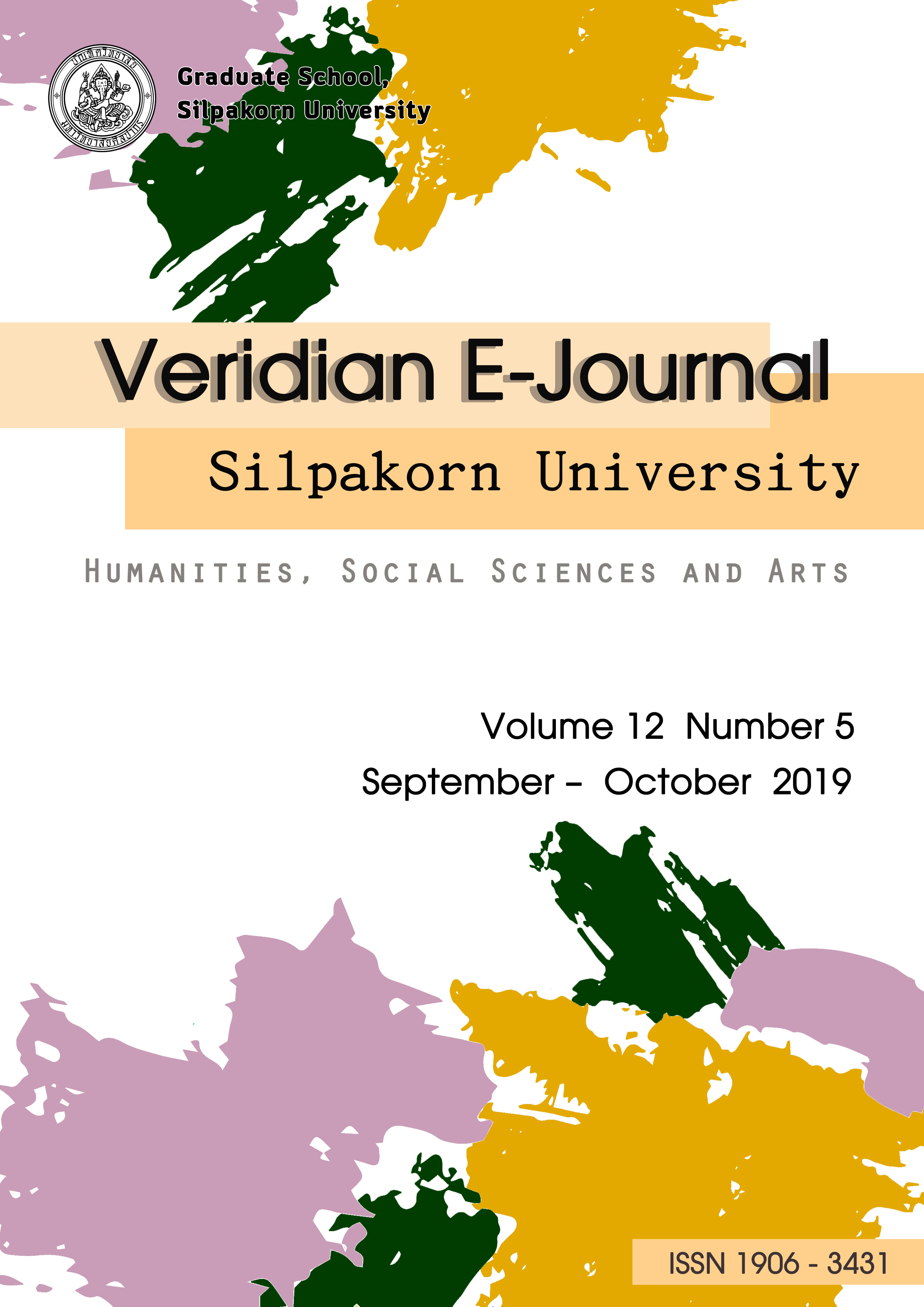รูปแบบนาฏกรรมในรัชกาลที่ 3 (Theatre And Dance Form In The Reign Of King Rama Iii)
Main Article Content
Abstract
การศึกษารูปแบบของงานนาฏกรรมในรัชกาลที่ 3 เป็นการวิจัยเชิงประวัติศาสตร์ที่มุ่งศึกษาปัจจัยทางสังคมที่มีผลต่อการเปลี่ยนแปลงงานนาฏกรรม โดยมุ่งที่จะศึกษาประวัติศาสตร์นาฏกรรมในรัชกาลพระบาทสมเด็จพระนั่งเกล้าเจ้าอยู่หัว ระหว่าง พ.ศ. 2367 - 2394 โดยใช้ระเบียบวิธีวิจัยผสมผสาน ที่ได้รวบรวมและค้นคว้าเอกสารชั้นต้นและชั้นรอง และหลักฐานทางประวัติศาสตร์และโบราณคดี ประเภทจิตรกรรมและประติมากรรม ผลการวิจัยพบว่ารูปแบบงานนาฏกรรมในรัชกาลที่ 3 ยังคงปรากฏอยู่ในราชสำนักและนอกราชสำนัก มีหน้าที่ตอบสนองความต้องการของสังคมในเชิงพิธีกรรมและความบันเทิง แม้ว่าพระบาทสมเด็จ-
พระนั่งเกล้าเจ้าอยู่หัวมิได้ใส่พระราชหฤทัยและให้ความสำคัญเรื่องงานนาฏกรรมมากนัก แต่กลับทำให้รูปแบบนาฏกรรมของหลวงเผยแพร่ไปสู่วังของเจ้านายและเรือนของขุนนาง จนทำให้มีการละเมิดธรรมเนียมราชสำนักเรื่องการมีละครหรือมโหรีผู้หญิงประดับเกียรติยศ นอกจากนี้ปัจจัยจากสภาพสังคม เช่น ระบบเศรษฐกิจ ระบบไพร่ การขยายตัวของพระนคร ความหลากหลายทางเชื้อชาติและศาสนา เป็นผลให้นาฏกรรมกระจายตัวโดยแพร่หลาย ประชากรมีรายได้เพิ่มมากขึ้นจนสามารถใช้จ่ายเพื่อความบันเทิงและการพนันได้ รูปแบบและวิธีแสดงนาฏกรรมที่ประกอบด้วยบริบทต่าง ๆ ยังคงแสดงตามแบบจารีตดั้งเดิม แต่ส่วนที่แปรเปลี่ยนจากเดิมคือกลุ่มนายทุน กลุ่มการจัดการ กลุ่มนักแสดง และกลุ่มผู้ชม การที่นาฏกรรมยังคงมีกลุ่มผู้จัดแสดงอย่างต่อเนื่องทำให้งานนาฏกรรมได้รับการสืบทอดจวบจนปัจจุบัน นาฏกรรมในรัชกาลที่ 3 จึงเป็นวิถีทางหนึ่งที่ช่วยอนุรักษ์งานนาฏกรรมไทยให้มีการต่อยอดและสร้างสรรค์งานที่หลากหลายได้เพิ่มมากขึ้นอย่างมีคุณภาพตราบจนทุกวันนี้
This study on theatre and dance form in the reign of King Rama III was a historical research aiming to examine social factors that affected changes on dances. The purpose of this research was to reveal the history of dance in the reign of King Nangklao (Rama III) during 1824 - 1851 AD, making use of mixed research methodology by collecting primary and secondary documents on historical and archaeological evidences including paintings and sculptures. The results of this research proved that theatre and dance form in the reign of King Rama III, both inside and outside royal court, served the social needs in ritual and entertainment functions. In spite of the fact that King Nangklao did not show much interest in theatre and dance, royal theatre and dance form was widely practiced in other royal households and even in houses of noblemen. Such practice, however, violated the law of having female dancers and musicians as honorary adornment. In addition, social factors such as economy, feudal system, the expansion of the capital city, ethnic and religious diversity caused a remarkable popularity of the theatre and dance. Also, when people earned more income, they could spend on entertainment and gambling. While the theatre and dance form remained the same, changes occurred in patrons, management groups, performers and audiences. Because the dance has been performed continuously, it is still in existence. Finally, theatre and dance form in the reign of King Rama III can serve as a contribution to the preservation, continuation and recreation of the variety of high quality Thai dances nowadays.
